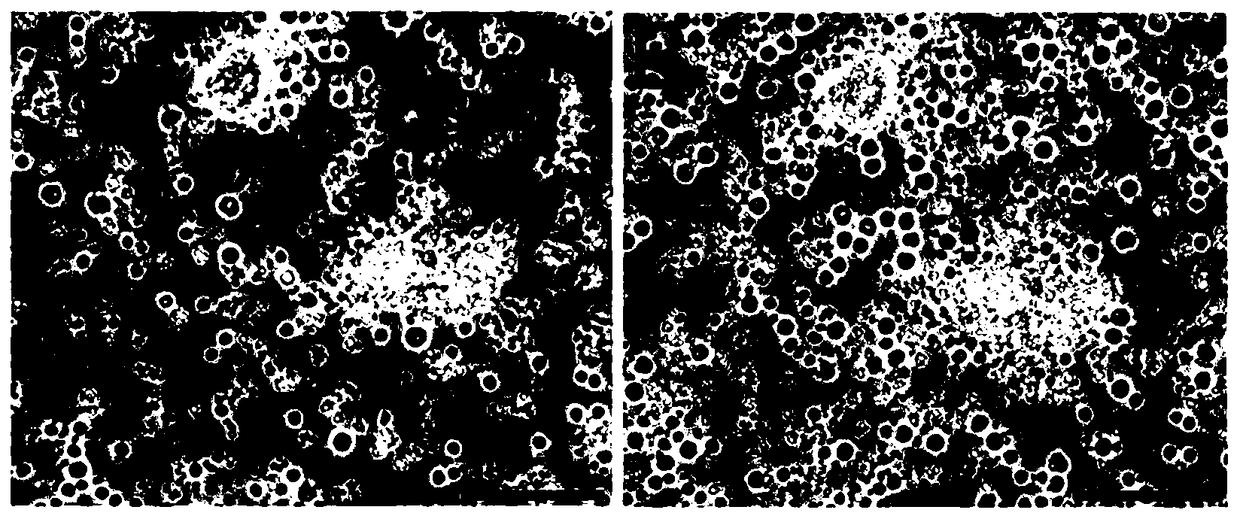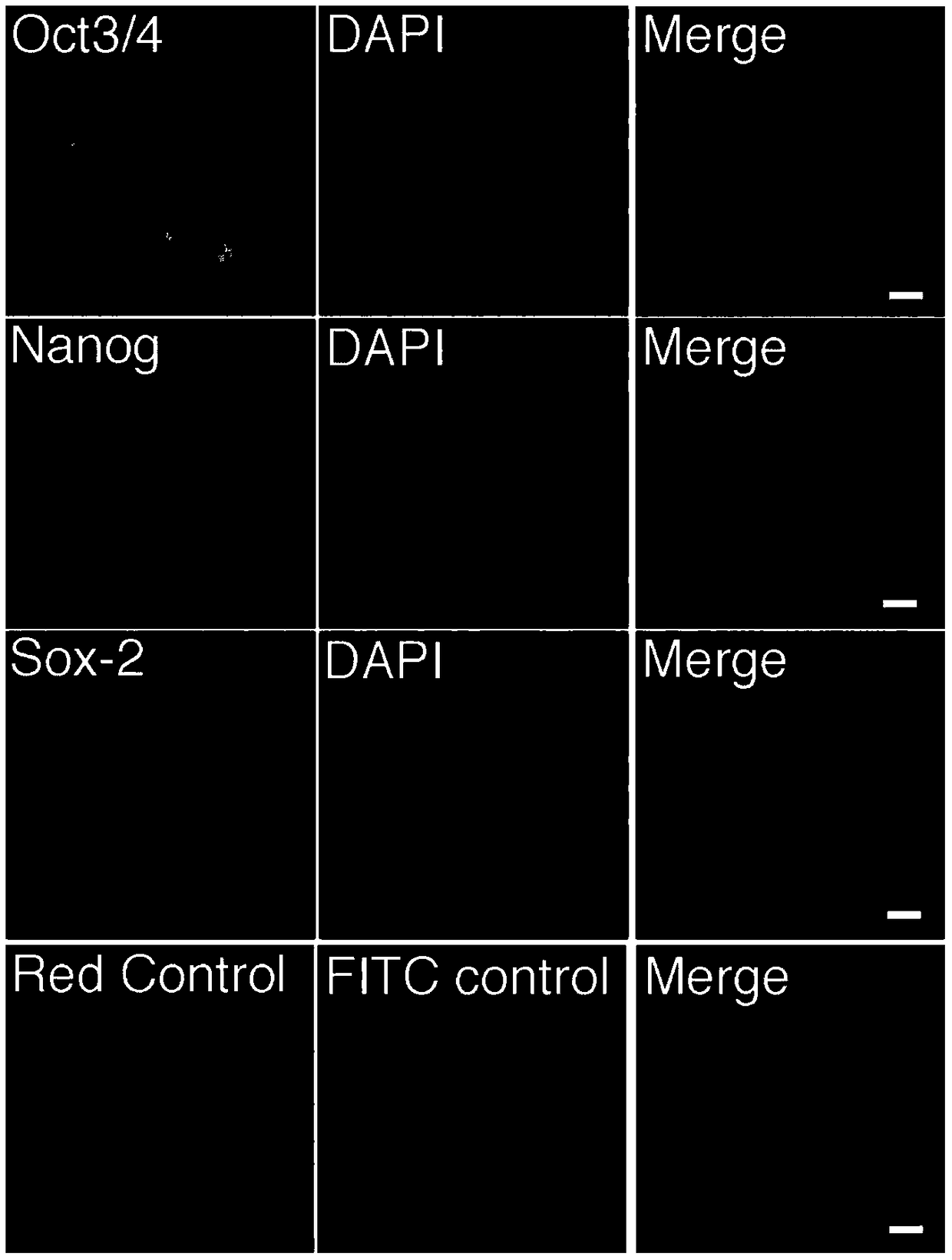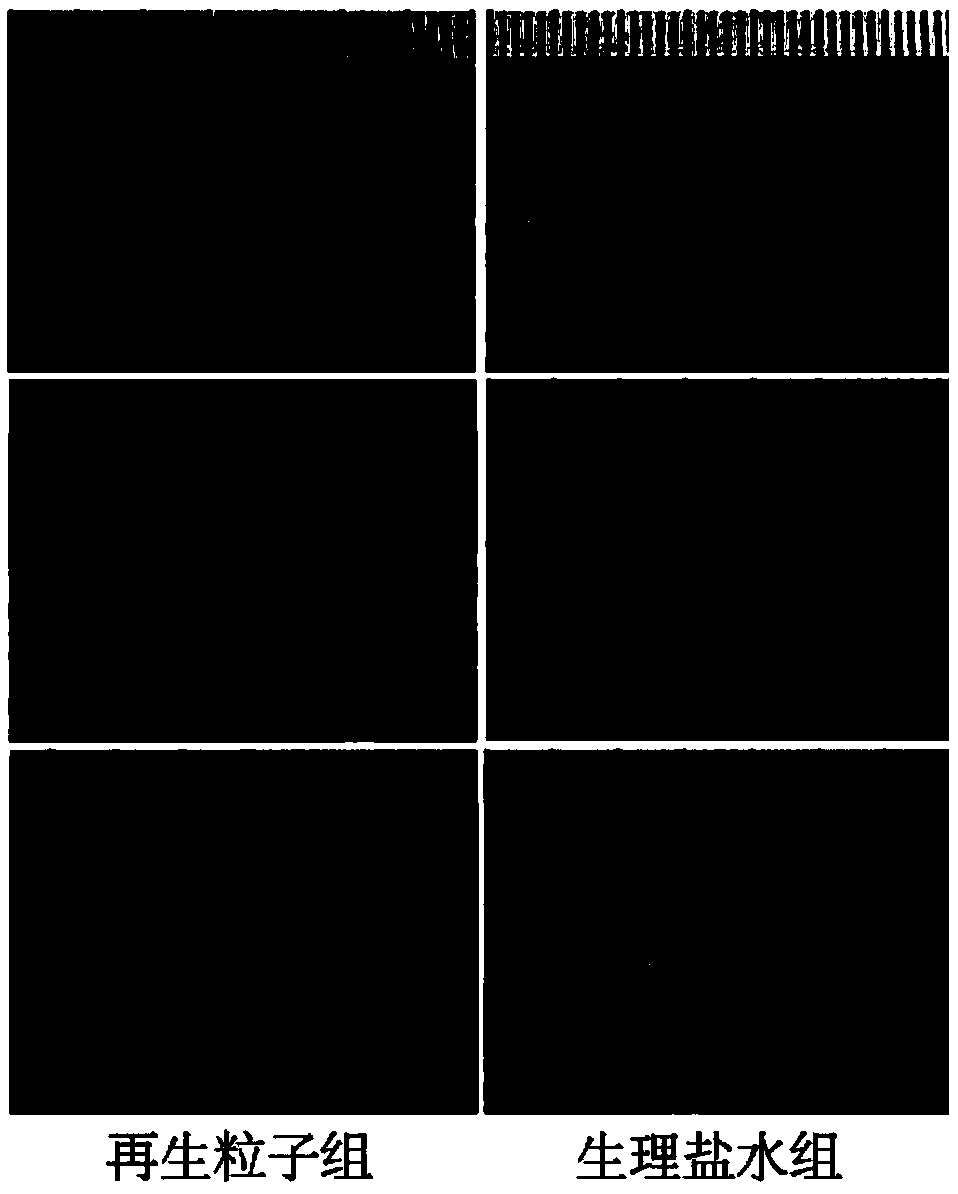Application of umbilical cord blood regeneration particles and composition thereof to skin wound healing therapy
A technology for wound healing and umbilical cord blood, applied in the field of biomedicine, to prevent the formation of scars, shorten the healing time, and shorten the wound healing time
- Summary
- Abstract
- Description
- Claims
- Application Information
AI Technical Summary
Problems solved by technology
Method used
Image
Examples
Embodiment 1
[0044] Preparation of umbilical cord blood regeneration particles
[0045] In this example, the preparation of umbilical cord blood regeneration particles is exemplified.
[0046] Blood source: The umbilical cord blood is collected into a blood bag containing anticoagulant. The anticoagulant is the original sodium citrate in the blood bag, and the umbilical cord blood is transported to Preparation lab.
[0047]Conditions: The process of obtaining umbilical cord blood regeneration particles requires a complete aseptic operation.
[0048] Specific steps are as follows:
[0049] (1) The umbilical cord blood was taken and centrifuged at 200g for 10 minutes. After centrifugation, it was divided into two parts, the upper layer solution A and the lower layer precipitate A.
[0050] (2) Take the lower layer of precipitate A, add PBS at a volume ratio of 1:2-5 for slight washing, and centrifuge at 200g for 10 minutes. After centrifugation, it is divided into two parts, the upper lay...
Embodiment 2
[0057] Regeneration particles express embryonic protein-like markers
[0058] By cultivating the regenerative particles (GFP marker) obtained in Example 1 on collagen-covered glass slides, their protein expression was detected after fixing, and the staining results showed that the particle cells expressed Oct3 / 4, Nanog, and Sox2 (see figure 2 ).
Embodiment 3
[0060] Experiment of regenerative particles repairing skin wounds of diabetic mice
[0061] The mice used in the experiment were all diabetic mice, a total of 6 mice, and a 1.5cmx1.5cm skin wound was made on the back skin of each diabetic mouse. According to body weight, they were randomly divided into 2 groups with 3 animals in each group. The regeneration particles group injected the regeneration particles (GFP marker) obtained in Example 1 into the experimental diabetic mice through the tail vein, and the normal saline group injected the same volume of normal saline into the experimental diabetic mice.
[0062] At 12 days, the skin wounds of diabetic mice in all regenerative particle groups were smaller than those in the normal saline group (see image 3 ), which indicated that mice treated with regenerative particles had faster wound healing.
[0063] After the wound was repaired, the mice in the injected regenerative particle group had newly grown hairs on the wound, wh...
PUM
| Property | Measurement | Unit |
|---|---|---|
| Diameter | aaaaa | aaaaa |
Abstract
Description
Claims
Application Information
 Login to View More
Login to View More - R&D
- Intellectual Property
- Life Sciences
- Materials
- Tech Scout
- Unparalleled Data Quality
- Higher Quality Content
- 60% Fewer Hallucinations
Browse by: Latest US Patents, China's latest patents, Technical Efficacy Thesaurus, Application Domain, Technology Topic, Popular Technical Reports.
© 2025 PatSnap. All rights reserved.Legal|Privacy policy|Modern Slavery Act Transparency Statement|Sitemap|About US| Contact US: help@patsnap.com



